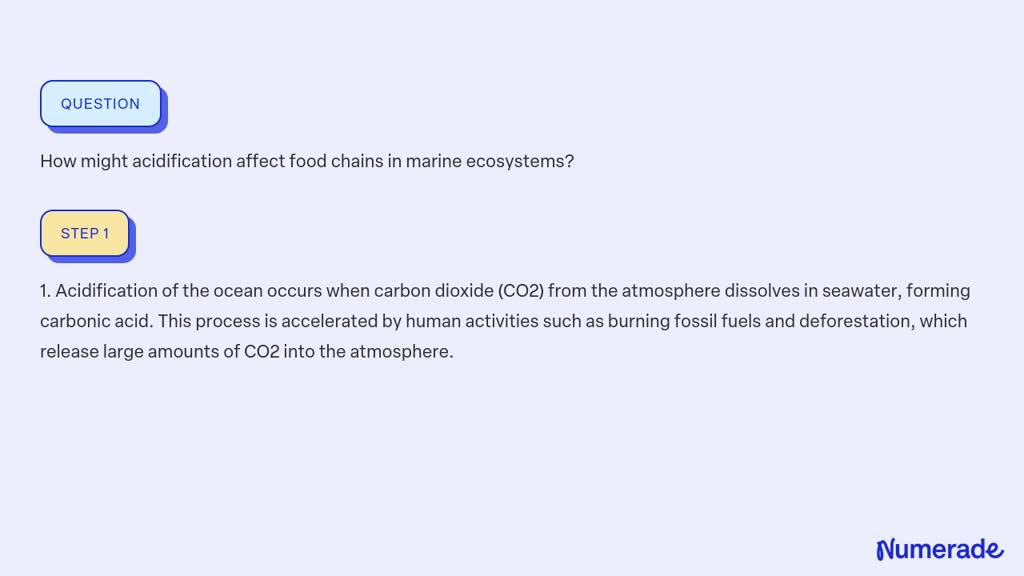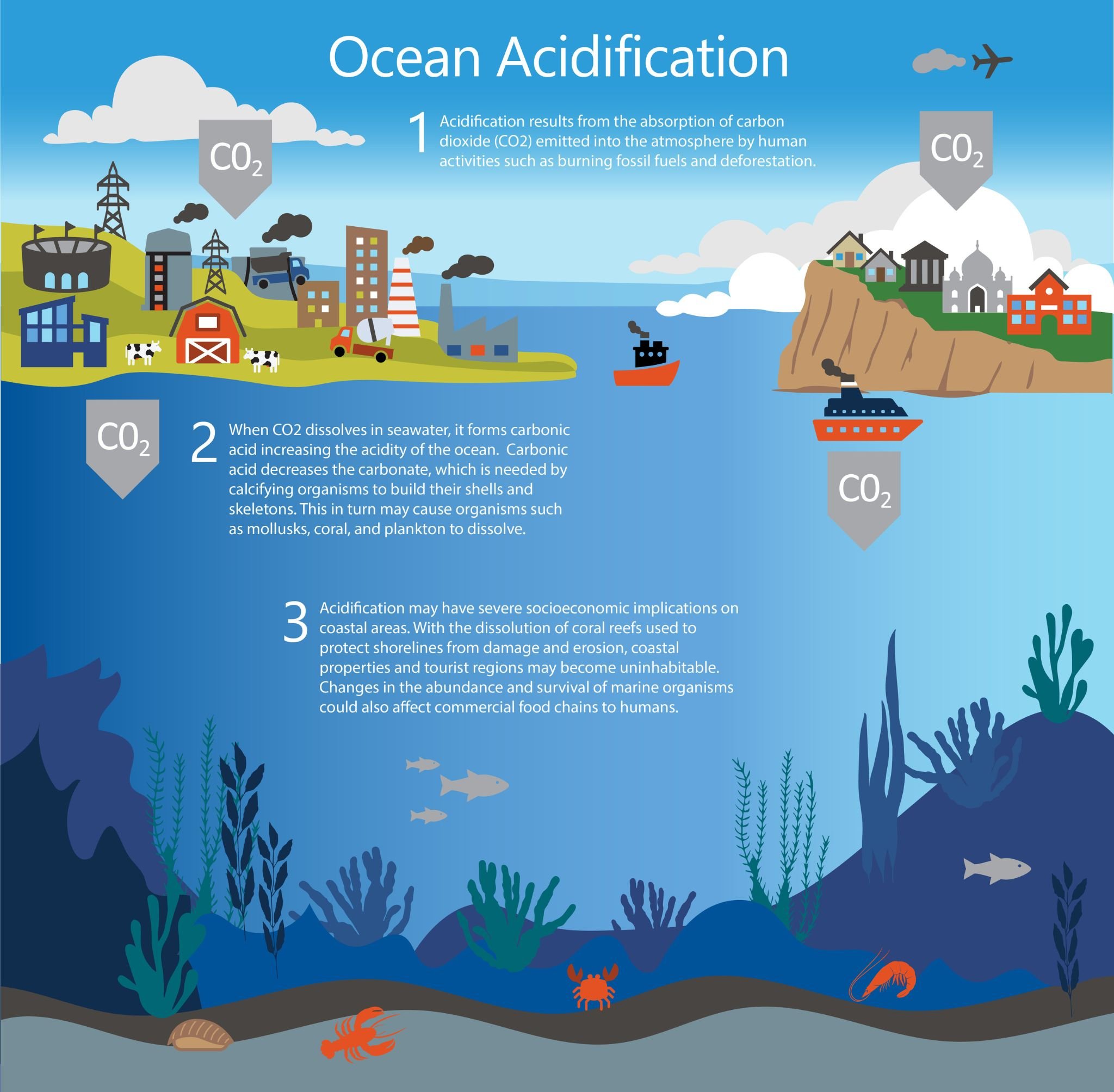RMSST Student Showcase Biology Diagrams Dissolution of anthropogenic CO2 into the oceans results in ocean acidification (OA), altering marine chemistry with consequences for primary, secondary, and tertiary food web producers. Here we examine how OA could affect the food quality of primary producers and subsequent trophic transfer to second and tertiary producers. Changes in food quality induced by OA are often […] This disruption at the base of the food chain can have far-reaching consequences for the entire marine ecosystem. Many species of fish, marine mammals, and seabirds depend on plankton as their primary food source. By collectively working towards lowering atmospheric CO2, we can help mitigate the effects of ocean acidification and safeguard Laboratory studies suggest changing ocean chemistry will 1) harm life forms that rely on carbonate-based shells and skeletons, 2) harm organisms sensitive to acidity and 3) harm organisms higher up the food chain that feed on these sensitive organisms. However, we do not yet know exactly how ecosystems will be impacted.

Some species of calcifying plankton that are threatened by ocean acidification form the base of marine food chains and are important sources of prey to many larger organisms. Tiny swimming sea snails called pteropods are considered the 'potato chips of the sea' as they serve as a critical part of the arctic marine food web, ultimately As acidification impacts marine food chains, it could lead to reduced fishery yields, threatening food security and livelihoods. Long-Term Outlook Ecosystem Shifts: The ongoing acidification of the oceans is expected to cause shifts in species composition, with some species adapting or moving to new environments while others decline or disappear. As acidification worsens, this reduced nutrient content may have a detrimental impact on the food chain. Marine species that rely on coccolithophores for food, such as smaller fishes and zooplanktons, would be forced to feed on nutritionally deficient food.

The Impacts of Ocean Acidification on Marine Food Quality and Its ... Biology Diagrams
If acidification reduces the populations of small animals like clams, oysters, and sea urchins, the larger animals like fish that feed upon those could run short of food, and so on up the food chain. Since life in the ocean is always food for something else, any increase or decrease in the abundance of a species can have a ripple effect on

Dissolution of anthropogenic CO2 into the oceans results in ocean acidification (OA), altering marine chemistry with consequences for primary, secondary, and tertiary food web producers.
